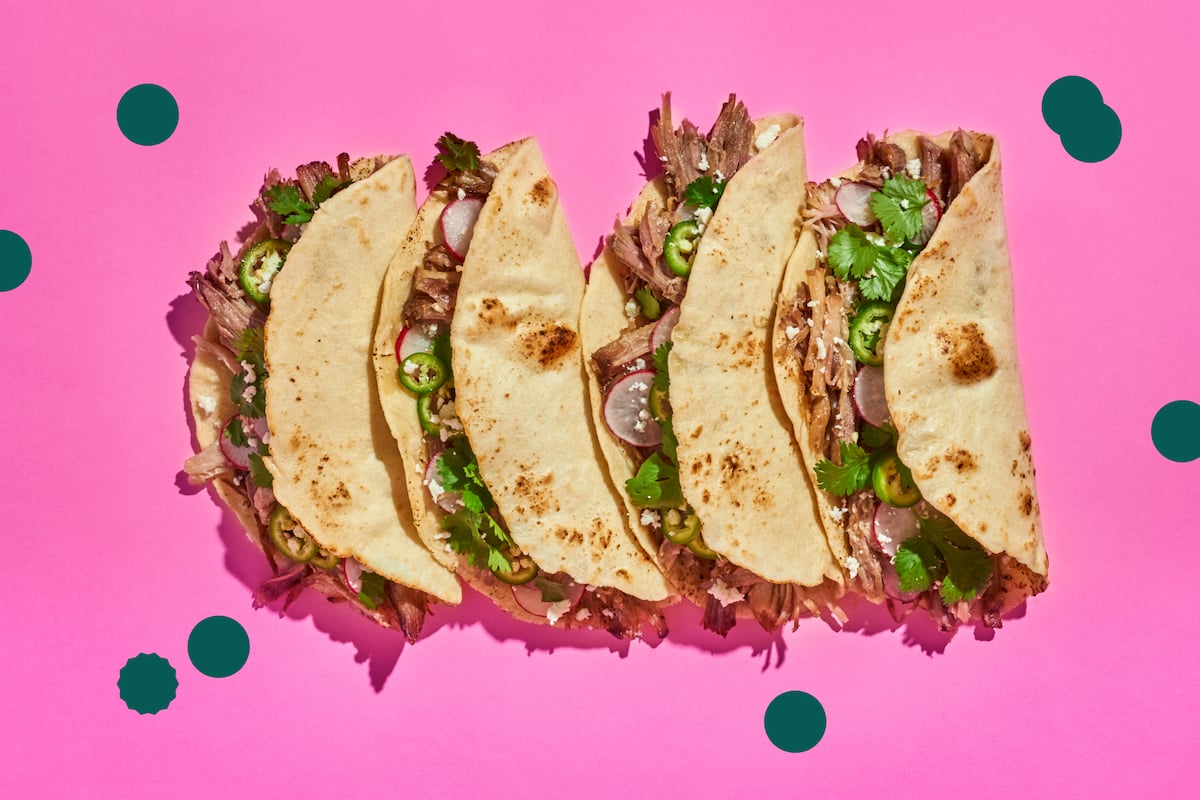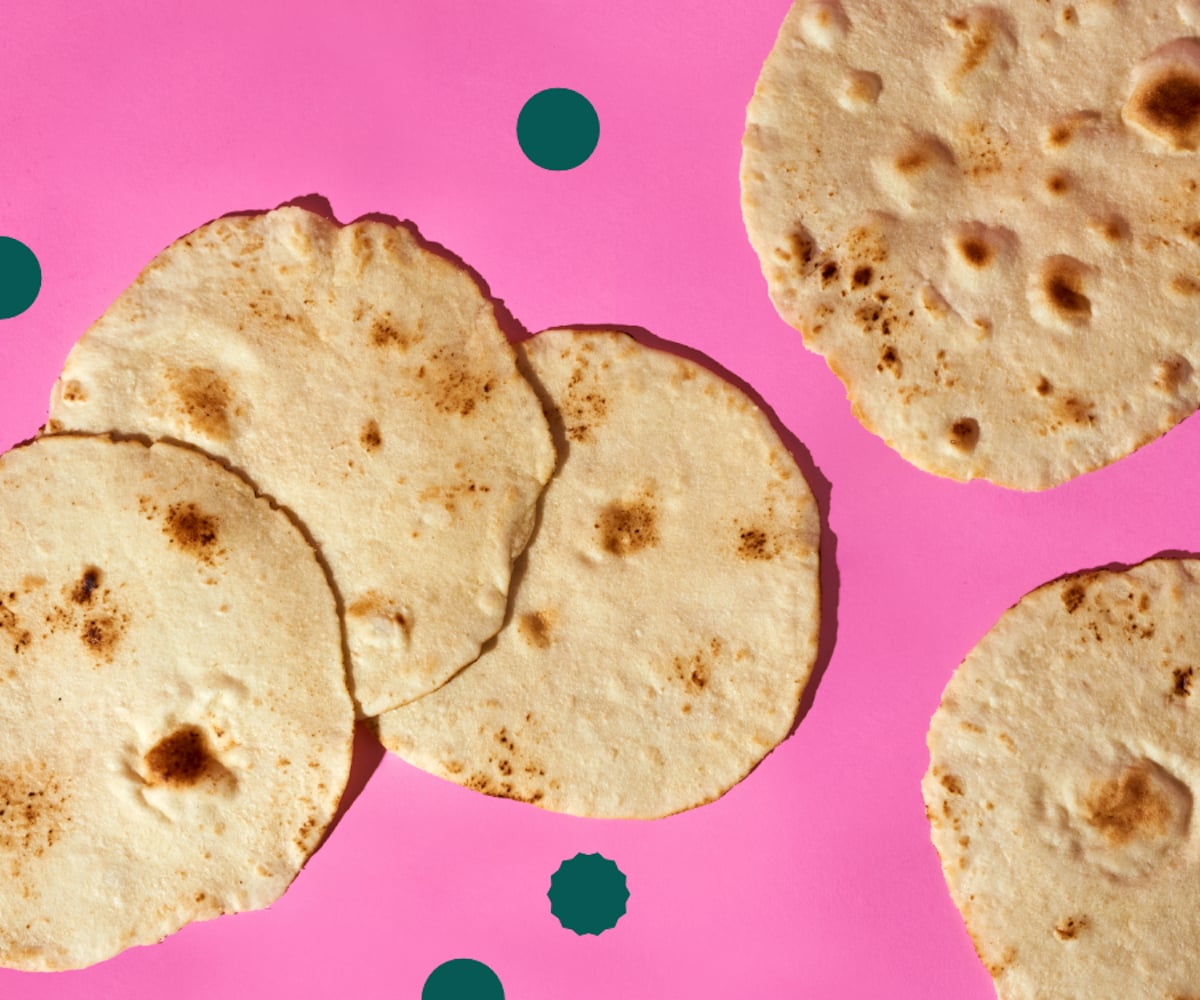
SPONSORED EDITORIAL
A New View of Better-for-You
A new high-fiber flour has exciting implications for customer favorites like tortillas, pastas and handhelds.
SPONSORED EDITORIAL
A New View of Better-for-You
A new high-fiber flour has exciting implications for customer favorites like tortillas, pastas and handhelds.
By Flavor & The Menu
March 28, 2024
By Flavor & The Menu
March 28, 2024
As Gen Xers and Millennials confront the physical realities of aging, “gut health” is one area that is commanding ever-greater attention and one that can be expected to have increased influence in driving their dining choices. Restaurant concepts that successfully marry better-for-you (BFY) advantages with premium flavor imperatives—especially when it comes to longstanding menu favorites—will be well positioned to enjoy a competitive edge as mindful eating practices gain traction.
In 2023, Food Insight reported that digestive/gut health is the third most commonly sought-after benefit among Americans. A year earlier, Deloitte® Insights revealed that three-quarters of consumers believed in connections between food and preventative and therapeutic health benefits. Some 84 percent of consumers considered health and wellness when making fresh food purchases.
Fiber is a key nutrient that supports gut and heart health, helping to maintain desirable blood sugar, controlling appetite and balancing the gut microbiome. With more than 70 percent of immune cells residing in the gut, consuming foods rich in prebiotic fiber creates an environment for them to thrive. But multiple studies find that a mere 5 percent of Americans consume the recommended amount of daily fiber needed for optimal gut, heart and immune health. This is an alarming statistic, and the embrace of plant-forward menu options isn’t progressing fast or wide enough to yield much hope for systemic change.
But adoption of BFY ingredients like HealthSense® High-Fiber Wheat Flour from Bay State Milling Company is giving rise to greater optimism for closing the fiber gap. The only clean-label, non-GMO wheat flour in the U.S., HealthSense® flour features up to 10 times the fiber in traditional refined wheat flour and has been recognized by Fast Company as a “World Changing Idea.” Key to the product’s success is that it has no negative impact on flavor or performance.

Nutrition Without Compromise
“The main benefit of using HealthSense® flour in recipes is adding a nutritional boost to the foods being prepared in a way that the consumer will not notice,” explains Colleen Zammer, VP of Growth and Innovation at Bay State Milling. “Call it ‘stealth health’ or ‘nutrition without compromise.’ We like to say the big difference with our flour is not noticing a difference in the taste of foods.”
Chefs can use HealthSense® flour as a 1:1 swap for other wheat flours. It does absorb more water, particularly in bakery items, which can lead to increased recipe yields and improved cost savings, says Zammer. “In addition, it has some functional benefits, such as improving dough extensibility for pizza, improving flexibility in tortillas and reducing stickiness and sauce absorption in pasta.”
Breads and rolls that require airiness and volume is one category that does require an adaptation for optimal performance. In these products, Bay State Milling recommends substituting 50 percent of the flour to maintain volume; this will still deliver a good source of fiber: 3 grams per serving.
Commitment to Innovation
Having been in the wheat business for more than 125 years, executives at Bay State Milling Company were dismayed to witness a steady decline in wheat flour consumption, largely thanks to the growing demand for gluten-free and reduced-carbohydrate alternatives. “Consumption of wheat-based foods far exceeds that of any other food type in North America; however, consumption of breads and rolls alone has declined by 17 percent over the last 10 years,” estimates Zammer. “It’s hard to see consumers shy away from a wonderful, healthful food. We saw an opportunity to change that trajectory by offering a unique variety of wheat that brings back the fiber consumers are missing in a format that doesn’t require them to sacrifice the taste of white flour.”
The product is made from a specialty variety of wheat, one that is not genetically modified, but grown to naturally feature more resistant starch in the middle of the kernel. The result is a clean label product, unlike high-fiber alternatives that require processed additives. HealthSense® flour has also been certified by the American Heart Association as meeting criteria for foods and ingredients that support heart health as part of a nutritious diet.
“For restaurants that position themselves as farm-to-table concepts, HealthSense® flour is U.S. grown and milled, offering full traceability and positive grower partner stories,” says Zammer.

Timely Impact for Tortillas
The potential impact HealthSense® flour can have on American menus is impressive considering the breadth of categories that have long leaned on wheat flour as a prime ingredient. Contemplate just one of those categories: tortillas, one of Flavor & The Menu’s 2024 Top 10 Trends. Tortillas are a carrier of choice for numerous items across all dayparts, and operators are pushing the innovation envelope with such techniques as embossing and infusing dough with color. Adding a BFY component here expands the opportunity further.
While the popularity of the tortilla is growing globally, the fastest growth rate is seen in North America, where the category is especially popular among younger demographics, cited Future Market Insights in 2022. “Whole wheat tortillas, tortilla chips and corn tortillas are taking the food industry by storm.”
For foodservice concepts that specialize in hand producing artisanal wheat tortillas, using HealthSense® flour will deliver six times the fiber of conventional tortillas, along with reduced net carbs and calories. Chefs can also count on enhanced functionality of the dough and finished product. Dough-making characteristics include:
- Improved dough extensibility (i.e. minimized dough springback);
- Improved dough machinability; and
- Optimal water absorption to reduce sticking to the tortilla press.
This leads to a finished product that features:
- Enhanced rollability and foldability throughout its shelf life;
- No differences in color;
- No differences in flavor quality; and
- Better cost-in-use (typical isolated fiber ingredients cost more than $2 per pound and are not clean label).
BFY = Better for All
Many chefs and foodservice operators have shown some reluctance in jumping on the BFY bandwagon over the years. Zammer gets it: “Culinary is all about great-tasting foods and an awesome consumer experience. But many of today’s whole-wheat pastas and high-fiber breads are often bitter and dense, and they don’t deliver on consumer expectations when dining out.”
HealthSense® High-Fiber Wheat Flour is the solution chefs and their patrons are hunting for. “It provides the white flour experience consumers love while delivering the fiber they need—and are starting to seek,” says Zammer. “If consumers understand they can have great taste and health, it’s a win!” She encourages marketers to be mindful of how (or if) they promote use of the flour in menu items, focusing on the fantastic taste first, and body benefits second. Ultimately, Zammer says, “Tasting is believing. But executing and messaging well are equally important in getting there.”
The fiber gap is further demonstration of the profound disconnect among most American diners about the impact of their dietary choices. But by raising this awareness among patrons together with delivering delicious solutions, foodservice operators can polish their health halos to a brilliant gleam.
Click here to learn more about HealthSense® High-Fiber Wheat Flour and try the only clean-label, non-GMO, better-for-you wheat flour on the market.
As Gen Xers and Millennials confront the physical realities of aging, “gut health” is one area that is commanding ever-greater attention and one that can be expected to have increased influence in driving their dining choices. Restaurant concepts that successfully marry better-for-you (BFY) advantages with premium flavor imperatives—especially when it comes to longstanding menu favorites—will be well positioned to enjoy a competitive edge as mindful eating practices gain traction.
In 2023, Food Insight reported that digestive/gut health is the third most commonly sought-after benefit among Americans. A year earlier, Deloitte® Insights revealed that three-quarters of consumers believed in connections between food and preventative and therapeutic health benefits. Some 84 percent of consumers considered health and wellness when making fresh food purchases.
Fiber is a key nutrient that supports gut and heart health, helping to maintain desirable blood sugar, controlling appetite and balancing the gut microbiome. With more than 70 percent of immune cells residing in the gut, consuming foods rich in prebiotic fiber creates an environment for them to thrive. But multiple studies find that a mere 5 percent of Americans consume the recommended amount of daily fiber needed for optimal gut, heart and immune health. This is an alarming statistic, and the embrace of plant-forward menu options isn’t progressing fast or wide enough to yield much hope for systemic change.
But adoption of BFY ingredients like HealthSense® High-Fiber Wheat Flour from Bay State Milling Company is giving rise to greater optimism for closing the fiber gap. The only clean-label, non-GMO wheat flour in the U.S., HealthSense® flour features up to 10 times the fiber in traditional refined wheat flour and has been recognized by Fast Company as a “World Changing Idea.” Key to the product’s success is that it has no negative impact on flavor or performance.

Nutrition Without Compromise
“The main benefit of using HealthSense® flour in recipes is adding a nutritional boost to the foods being prepared in a way that the consumer will not notice,” explains Colleen Zammer, VP of Growth and Innovation at Bay State Milling. “Call it ‘stealth health’ or ‘nutrition without compromise.’ We like to say the big difference with our flour is not noticing a difference in the taste of foods.”
Chefs can use HealthSense® flour as a 1:1 swap for other wheat flours. It does absorb more water, particularly in bakery items, which can lead to increased recipe yields and improved cost savings, says Zammer. “In addition, it has some functional benefits, such as improving dough extensibility for pizza, improving flexibility in tortillas and reducing stickiness and sauce absorption in pasta.”
Breads and rolls that require airiness and volume is one category that does require an adaptation for optimal performance. In these products, Bay State Milling recommends substituting 50 percent of the flour to maintain volume; this will still deliver a good source of fiber: 3 grams per serving.
Commitment to Innovation
Having been in the wheat business for more than 125 years, executives at Bay State Milling Company were dismayed to witness a steady decline in wheat flour consumption, largely thanks to the growing demand for gluten-free and reduced-carbohydrate alternatives. “Consumption of wheat-based foods far exceeds that of any other food type in North America; however, consumption of breads and rolls alone has declined by 17 percent over the last 10 years,” estimates Zammer. “It’s hard to see consumers shy away from a wonderful, healthful food. We saw an opportunity to change that trajectory by offering a unique variety of wheat that brings back the fiber consumers are missing in a format that doesn’t require them to sacrifice the taste of white flour.”
The product is made from a specialty variety of wheat, one that is not genetically modified, but grown to naturally feature more resistant starch in the middle of the kernel. The result is a clean label product, unlike high-fiber alternatives that require processed additives. HealthSense® flour has also been certified by the American Heart Association as meeting criteria for foods and ingredients that support heart health as part of a nutritious diet.
And “For restaurants that position themselves as farm-to-table concepts, HealthSense® flour is U.S. grown and milled, offering full traceability and positive grower partner stories,” says Zammer.

Timely Impact for Tortillas
The potential impact HealthSense® flour can have on American menus is impressive considering the breadth of categories that have long leaned on wheat flour as a prime ingredient. Contemplate just one of those categories: tortillas, one of Flavor & The Menu’s 2024 Top 10 Trends. Tortillas are a carrier of choice for numerous items across all dayparts, and operators are pushing the innovation envelope with such techniques as embossing and infusing dough with color. Adding a BFY component here expands the opportunity further.
While the popularity of the tortilla is growing globally, the fastest growth rate is seen in North America, where the category is especially popular among younger demographics, cited Future Market Insights in 2022. “Whole wheat tortillas, tortilla chips and corn tortillas are taking the food industry by storm.”
For foodservice concepts that specialize in hand producing artisanal wheat tortillas, using HealthSense® flour will deliver six times the fiber of conventional tortillas, along with reduced net carbs and calories. Chefs can also count on enhanced functionality of the dough and finished product. Dough-making characteristics include:
- Improved dough extensibility (i.e. minimized dough springback);
- Improved dough machinability; and
- Optimal water absorption to reduce sticking to the tortilla press.
This leads to a finished product that features:
- Enhanced rollability and foldability throughout its shelf life;
- No differences in color;
- No differences in flavor quality; and
- Better cost-in-use (typical isolated fiber ingredients cost more than $2 per pound and are not clean label).
BFY = Better for All
Many chefs and foodservice operators have shown some reluctance in jumping on the BFY bandwagon over the years. Zammer gets it: “Culinary is all about great-tasting foods and an awesome consumer experience. But many of today’s whole-wheat pastas and high-fiber breads are often bitter and dense, and they don’t deliver on consumer expectations when dining out.”
HealthSense® High-Fiber Wheat Flour is the solution chefs and their patrons are hunting for. “It provides the white flour experience consumers love while delivering the fiber they need—and are starting to seek,” says Zammer. “If consumers understand they can have great taste and health, it’s a win!” She encourages marketers to be mindful of how (or if) they promote use of the flour in menu items, focusing on the fantastic taste first, and body benefits second. Ultimately, Zammer says, “Tasting is believing. But executing and messaging well is equally important in getting there.”
The fiber gap is further demonstration of the profound disconnect among most American diners about the impact of their dietary choices. But by raising this awareness among patrons together with delivering delicious solutions, foodservice operators can polish their health halos to a brilliant gleam.
Click here to learn more about HealthSense® High-Fiber Wheat Flour and try the only clean-label, non-GMO, better-for-you wheat flour on the market.







